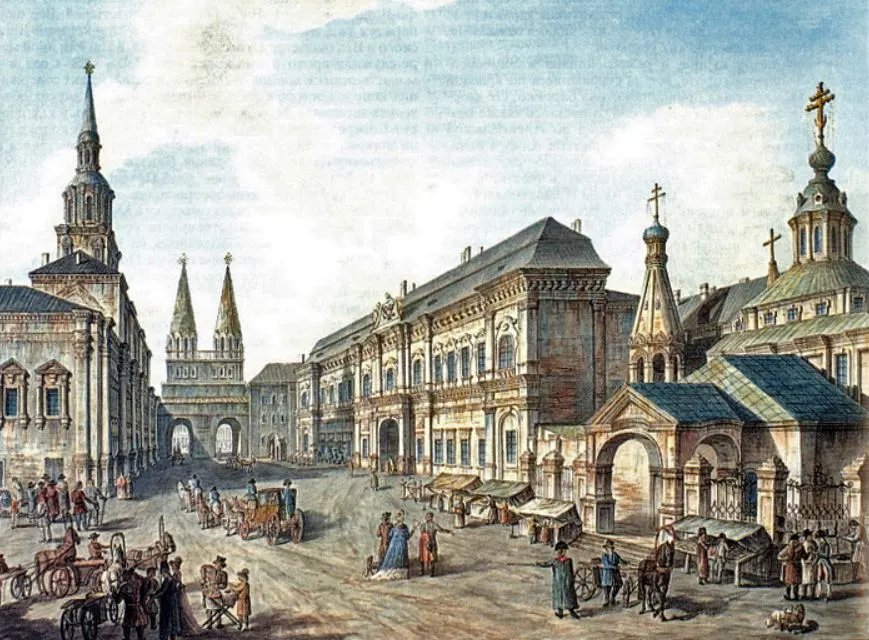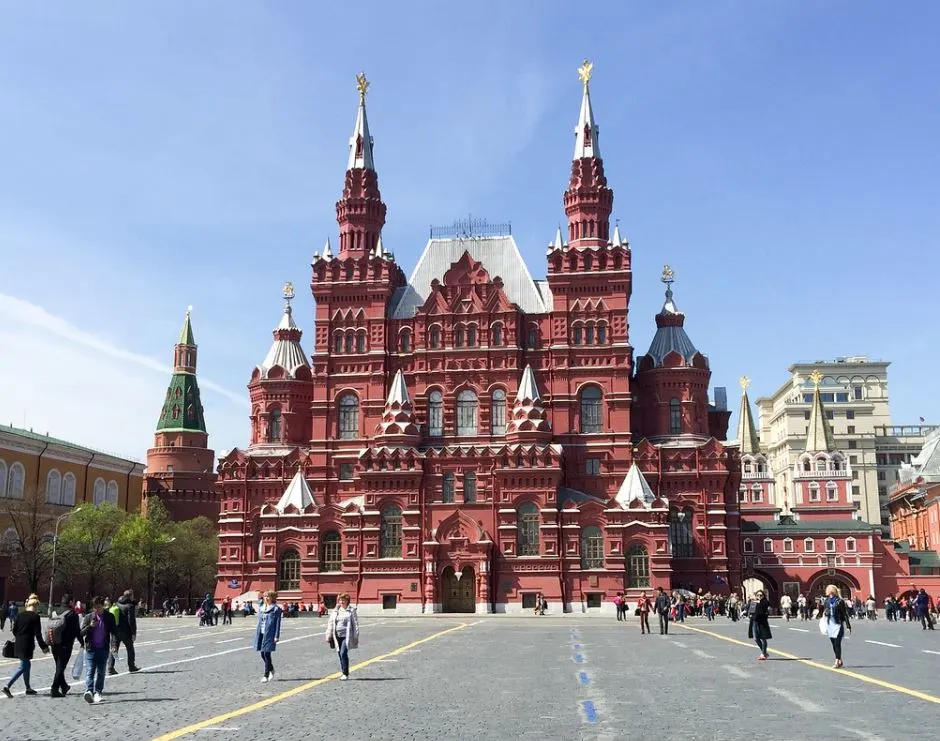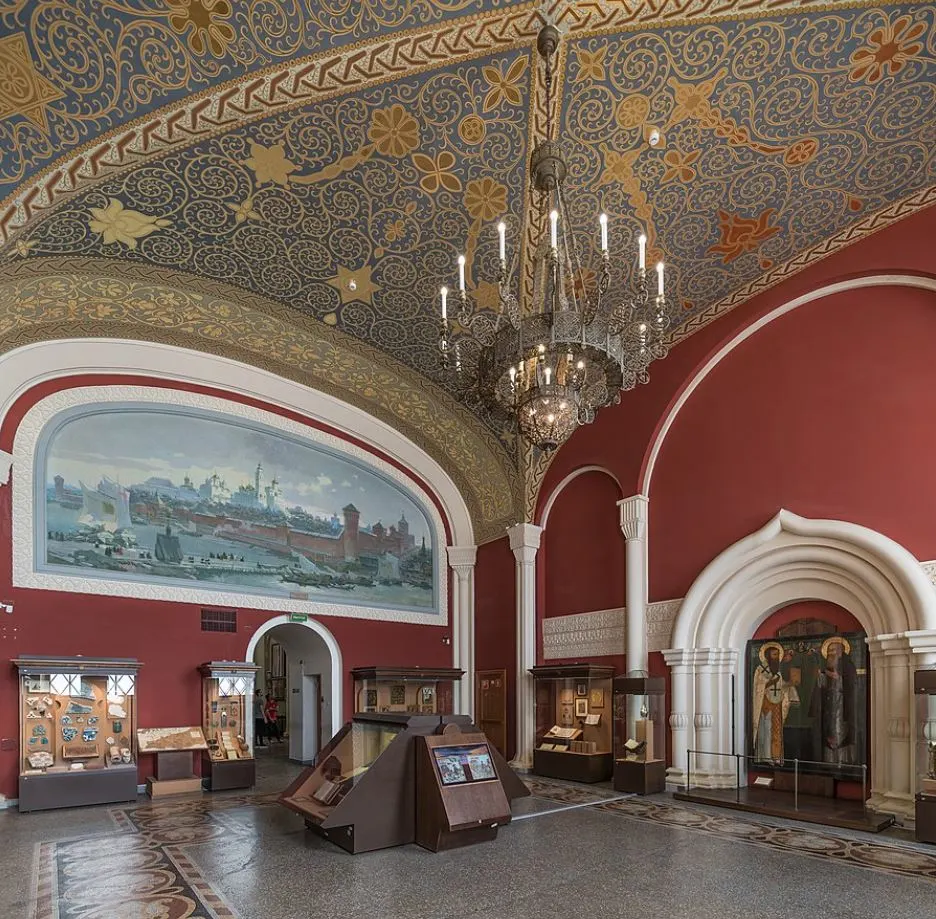If you enjoy Russian architecture and history, then this remarkable building in Moscow offers the very best of both worlds.
In this article, you’ll discover the ultimate list of interesting facts about the State Historical Museum, one of the most prominent structures in the heart of Russia’s capital.
1. It’s located between 2 famous squares in central Moscow
If we think about the Red Square in Moscow then the first visions that come to mind are most probably the colorful domes of the Saint Basil’s Cathedral, right?
Even though this is definitely the most iconic landmark in Russia’s capital, there are plenty more fascinating buildings located within its vicinity.
One of these is located right on the opposite end of the famous church on the square and is called the State Historical Museum, a strikingly red building designed in distinctive Russian architecture.
At the back of this remarkable building, we can find Manege Square, an often forgotten but equally important pubic space in central Moscow that connects red Square with Tverskaya Street, the main boulevard in the city.

2. The original building on the site dates back to Peter the Great
Even though the current building serves as the museum of Russian history, the original building that occupied the site before the end of the 19th century had a completely different purpose.
This building was called the “Principal Medicine Store” or “Zemsky prikaz” and was built on orders of Peter the Great (1682-1725) himself. It was constructed in the early 18th century and was basically the first pharmacy in Russia.
This historic building ended up being demolished in 1874 to make way for the State Historical Museum.

3. The building briefly had a different purpose in the 18th century

The building briefly had a dual purpose as in 1755 it was expanded and part of it was used as the first campus of the Moscow State University. This university was established on January 23 of that year.
In the late 18th century, the campus moved to a Neoclassical building which was built between 1782 and 1793, and the building returned to its original purpose.
The current building of the most prestigious education facility in Russia (it has produced 13 Nobel Prize laureates) is located on Sparrow Hills, a hill in the southwest of the city and about 5 kilometers (3 miles) from the city center.
It’s fair to conclude that this amazing university building, which is one of the so-called “7 Sisters” built during the Stalin era, is less humble than the original campus of the university on Red Square!

4. The current building was built especially for the historical museum
The museum of Russian history was founded in the year 1872 by several so-called “Slavophiles.” These were people who wanted the Russian Empire to incorporate traditional values instead of influences from Western Europe.
The current building in which this museum is housed was built between 1875 and 1883 and has been the main venue of the museum ever since the opening of its first 11 exhibit rooms in June of the year 1883.

5. It was designed in the Russian Revival architectural style
The building was designed by one of the most renowned architects and artists of the time, Vladimir Osipovich Sherwood (1832-1897), a major proponent of the Russian Revival.
The last name of the man isn’t a mistake because his father was a so-called “Anglo-Russian,” a British citizen who came to Russia to conduct business (he was an engineer).
His design was chosen following an architectural competition and most certainly appealed to the Slavophiles who made up the jury as Sherwood designed it in a Russian Revival style, incorporating multiple traditional Russian architectural elements.

6. The museum had an important honorary president in the 1880s
The opening of the museum went hand in hand with another important moment in Russian history, the coronation of Emperor Alexander III (1845-1894). This also means that the newly crowned emperor was a guest of honor at the opening event.
One of the most remarkable facts about the State Historical Museum is that Emperor Alexander III briefly became the honorary president of the museum in the year 1894, the year that he passed away.
The museum was renamed the “Tsar Alexander III Imperial Russian History Museum” the following year in 1895.

7. The interior of the museum was completely renovated in the 1990s
The interior of the building is equally impressive as the exterior. The decorations on the walls aren’t the original ones, though, as the Russian Revival paintings of some of the most famous Romantic Artists in Russian history were plastered over during the Soviet period.
Luckily, the new Russian Government is more welcoming and completely redecorated the building’s interior which returned it to its original splendor, a project that was completed in the late 1990s.
The first room inside the museum is the so-called “Ceremonial Entrance Hall” and features a magnificent fresco on its ceiling depicting the “Genealogical Tree of Russian Rulers.”

The museum owns the largest coin collection in Russia that consists of 1.7 million coins from various periods in history. But that’s not all, because the collection of the museum consists of over 4.5 million artifacts related to Russian history!
This means that the museum is pretty much a walkthrough of Russian history dating back to items from prehistoric times all the way to the Romanov dynasty! The 35 rooms of the museum include:
- Rooms 1 to 7 – Ancient history, all the way back to the stone age.
- Rooms 8 to 14 – The firming of the new Russian state.
- Rooms 15 to 21 – Expansion of the centralized Russian state.
- Rooms 22 to 35 – The history of the Russian Empire of the 18th-20th century.
The second floor is entirely occupied by the history of the Russian Empire and some branches of the museum are located in other buildings as well, including the Romanov Chambers, the Moscow Kremlin, and the Novodevichy Convent.

